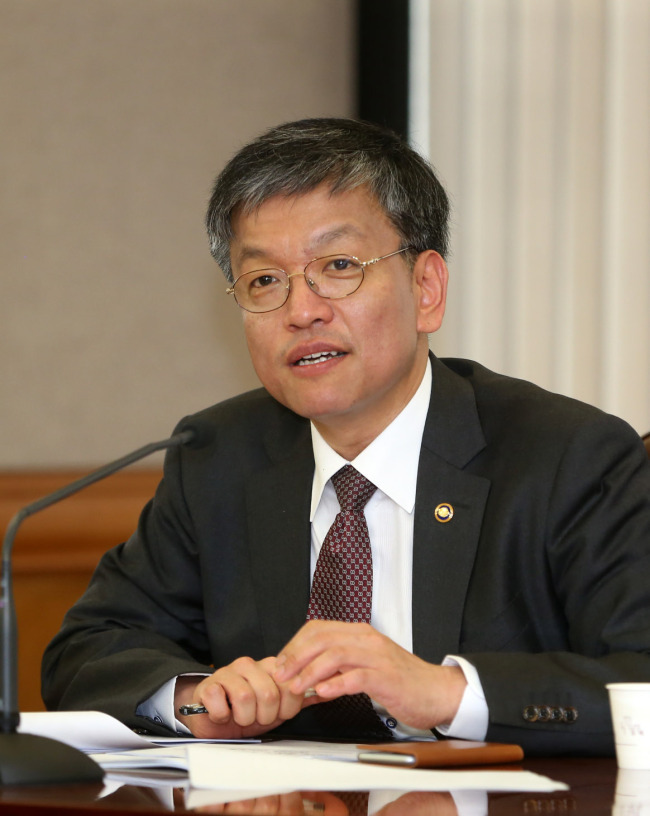[THE INVESTOR] Weak employment and low inflation led the U.S. Federal Open Market Committee to freeze its federal fund rate at 0.25 to 0.50 percent, extending the possibility and uncertainty over a rate rise, analysts say.
The U.S. FOMC said that it will maintain its benchmark interest rate, but remains “accommodative,” indicating that it will adjust its monetary policy in accordance with conditions in the labor market and consumer prices.
“In determining the timing and size of future adjustments to the target range for the federal funds rate, the Committee will assess realized and expected economic conditions relative to its objectives of maximum employment and 2 percent inflation,” the FOMC said in a statement.
With the inflation rate still running below its target and lower-than-expected job creations last month on the back of weak manufacturing in the world’s biggest economy, the Fed’s rate decision gave some time for the Korean market to breathe a sigh of relief, at least in the short-term. The U.S. only saw 38,000 new jobs in May, the smallest gain since September 2010, according to the Labor Department.
 |
Vice Finance Minister Choi Sang-mok |
“The Fed seemed to have taken a cautious approach given its weak job data and risks concerning the possibility of Britain exiting the European Union,” said Vice Finance Minister Choi Sang-mok in a meeting to review the country’s macroeconomic conditions on Thursday.
The Korean benchmark KOSPI ended at 1,951.99, down 0.86 percent on Thursday, following an overnight losses on Wall Street where the Dow Jones Industrial Average dropped 0.2 percent at 17,640.17.
The FOMC has four more meetings left this year, and it is highly unlikely it will raise the federal funds rate in July, analysts say. The chances are it can move to increase the interest rate either in September or December. However, speculations are running high that the Fed would not want to make its key decision right after the U.S. presidential election in November. So, that leaves only September when it could increase the rate as long as job, inflation and other key data show significant improvements.
“The possibility of a rate rise has been decreased,” said Kim Byung-yun, analyst at NH Investment & Securities.
This has given some room for the global financial markets to be less sensitive to the Fed’s potential rate moves. However, as Fed Chairwoman Janet Yellen mentioned a rate hike is “not impossible by July,” the Korean market will still face volatility on possible capital outflows as a result of the rate increase following an increase in employment.
The U.S. economy is not entirely looking bright with growth expected to slow down this year, while low inflation can naturally be translated to slow wage growth, less spending or consumption and more savings.
Added to the U.S. negative outlook and “Brexit” risks, a slowdown in China, Korea’s largest trading partner, will affect Asia’s fourth-largest economy. The U.S. is expected to grow 2 percent this year, down from the Fed’s initial forecast of 2.2 percent.
“While it was previously expected that Chinese gross domestic product would slow in the second quarter, it is now almost a certainty,” said Brian Jackson, China economist at IHS Global Insight, adding that it forecast China to grow 6.5 percent this year.
By Park Hyong-ki (
hkp@heraldcorp.com)




![[Today’s K-pop] Blackpink’s Jennie, Lisa invited to Coachella as solo acts](http://res.heraldm.com/phpwas/restmb_idxmake.php?idx=644&simg=/content/image/2024/11/21/20241121050099_0.jpg)



